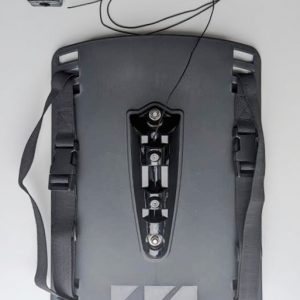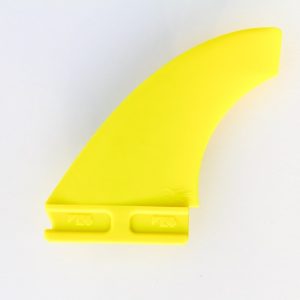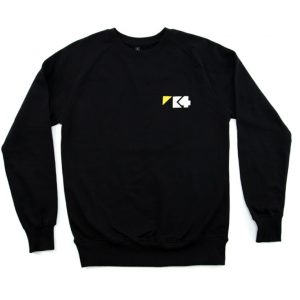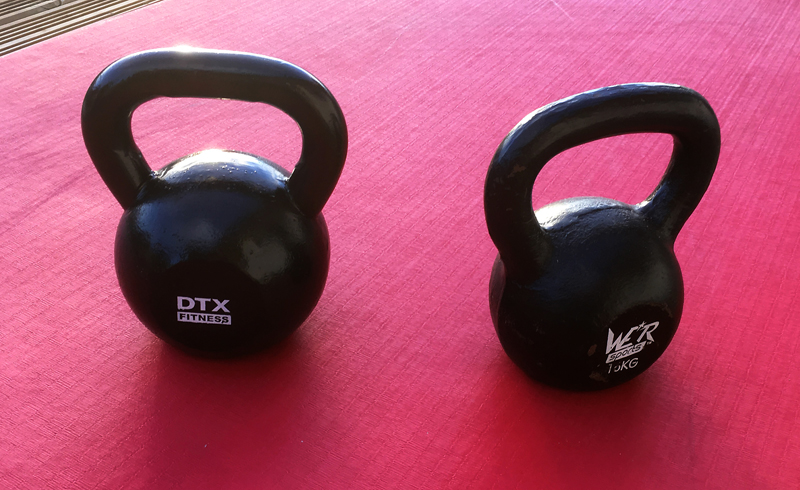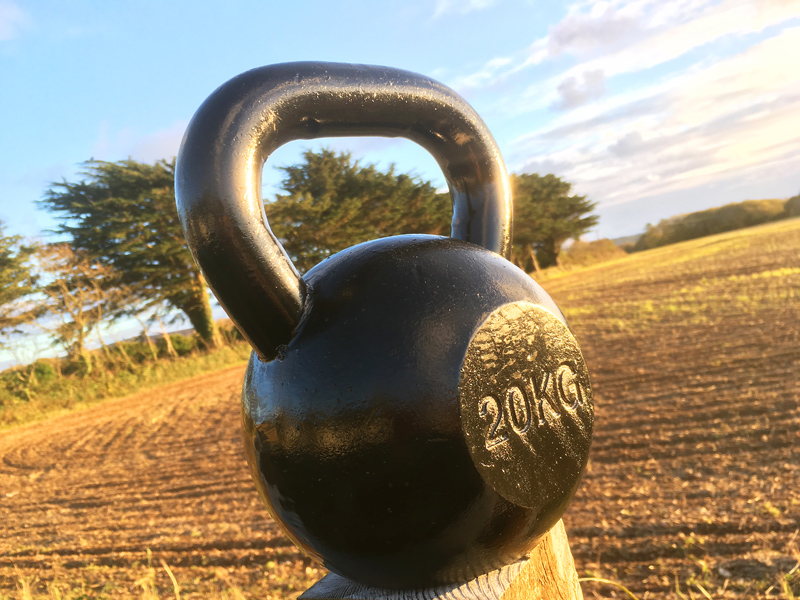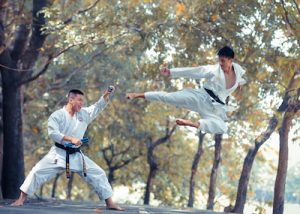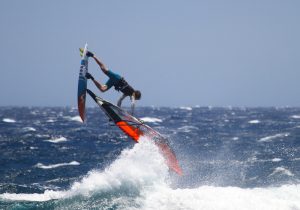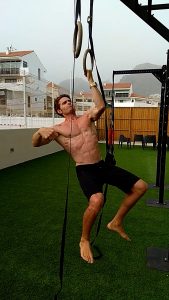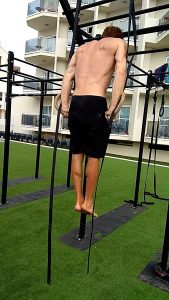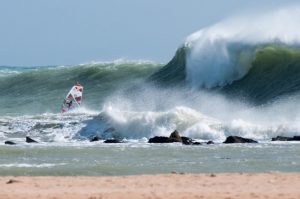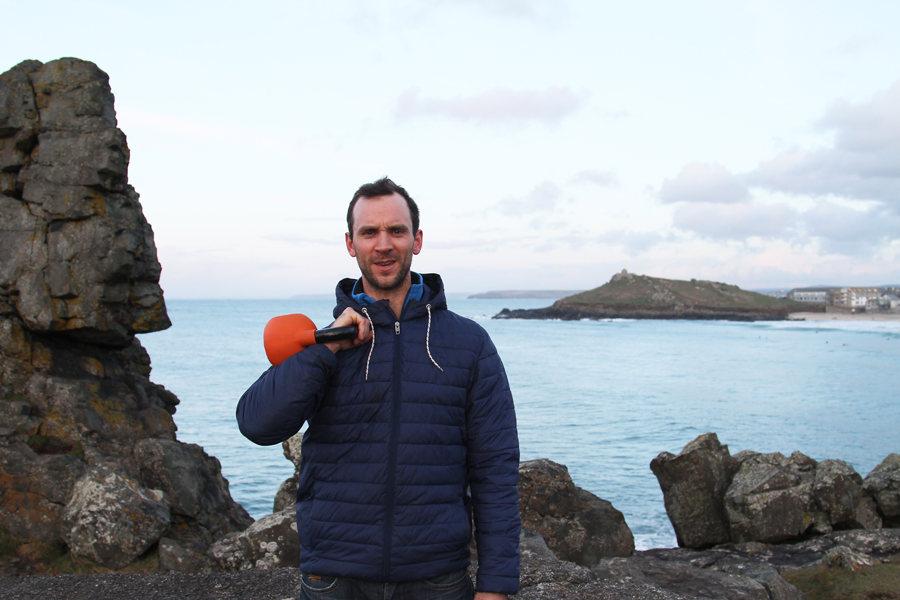
K4 Fitness – Kettlebell training for windsurfers.
Kettlebell training for windsurfers.
After the success of our initial fitness blog post (which you can read again HERE) we wanted to offer a simple but effective way windsurfers can start some form of windsurf conditioning and general keep fit to help improve their windsurfing.
Personally I’ve done a lot of Body Pump and running to keep myself fit and strong. Body Pump involves joining a gym and having to be at a class at a certain time two or three times a week (Body Pump is a lot of compound barbell lifts to music for an hour), which is not always possible for a lot of people, though I do recommend it as a fun way to work out.
I’d never used a Kettlebell before setting out to write this blog but had continually heard good things about training with them and it got me intrigued. It also seemed like a great match for windsurfing; cheap to buy, easy to have with you, work out anywhere and great to chuck in the van on long road trips. There also seems to be a trend of moving away from ‘weight lifting’ towards more functional movement based training, which makes sense for us windsurfers as a 300lb bench press isn’t going to help you ride a wave or land a jump or anything else rad!
I also happen to have a good friend who windsurfs, is a strength & conditioning coach and loves to work his clients with the Kettlebell.
Over to Nick:
Introduce yourself
I’m Nick Moffatt, I run NDM Sports and Personal training.
My Dad taught me to windsurf on holidays, I took instructor qualifications and did a fair few seasons around university. When I settled into school teaching I got back into rowing, competed nationally at club level and coached. Later around a back injury, I got more into strength & conditioning, learnt how important it is in the all-round sense as well as for sports. During recent years and a season of coaching City of Bristol Rowing Club men, I moved into strength and conditioning (S&C) with roles for local sports teams and schools, alongside running kettlebell training for the public. I’ve managed to windsurf and surf a lot more again recently, which are still my favourite past times.
Why kettlebells?
Maximum ‘bang for buck’ in global strength and fitness training, in terms of time input, minimal equipment and space required. Technically as well as physically it’s highly demanding and offers vast, true cross-training benefits. Kettlebells can be utilised in all planes of motion of the body. They can be used for intense trunk or core work, which we need to power our limbs in open-chain movement, e.g. swimming, surfing, windsurfing. There are incredible side benefits for using kettlebells, an antidote to the unwanted tightness from seated working or driving positions, and dysfunctional natures of windsurfing.
The kettlebell was originally used around 300 years ago in military training and has been since. There are so many ways you can train with them, they’re certainly no fad. With a huge benefit to many sports demands, they appear to be more widely used behind the scenes in professional sport along with traditional forms of strength and conditioning. What is important and interesting is the general transfer of training to our sport. When we’ve mastered a great base of movement, requiring stability and mobility, then we can strengthen, add power, add endurance, and put some sport specific stuff on top – the icing on the cake. But the general training qualities gained through ‘pure’ kettlebell training or quality general strength and conditioning training are the most important, and hugely benefit us in daily life and for windsurfing!
Personally, post-knee surgery, a lower back disc issue, and various niggles and imbalances, there was nothing quite like the kettlebell for exposing my weaknesses and getting stronger, which I needed for life and was crucial for getting me back into windsurfing. I am a hundred percent convinced that this type of training reduces the chance of injury. I never expected later to be sprinting around, coaching speed, agility and plyometrics and Olympic weightlifting but I accredit kettlebell training as my base to get over injury and enable the above. The high skill demand gives such great transfer to all other areas; runners get faster, jumpers go higher, athletes move better and get stronger.
How do I get started with Kettlebells?
Don’t get something too cheap as once you get into it you’ll just regret having wasted that cash that could have gone towards something better. A good range to work with is 8 – 24kg (30kg+ for any beasts out there?). 1-3 bells of different sizes. Nothing wrong with starting reasonably small, mainly you’d still get use of this with other exercises once you’d progressed your main lifts /swings before going heavier. More mass in your hands allows more feeling of force through the body to the ground and back up, which forces you into effective technique. (I started with 10kg and after a 4-week block of building up reps I moved up to 16kg and I’m now using 20kg – Steve)
Should I get professional instruction?
Definitely, it’s not worth doing this badly, there is probably no other piece of gym kit/training as technical, other than Olympic lifting so find a qualified instructor near you. ‘StrongFirst‘ is the Gold Standard. You could get a vast amount from just one 1-1 session and even go solo from then on if that suited, or join some small group personal training. Otherwise a qualified S&C coach with plenty of experience of working with lots of different people and their needs with kettlebells. You must get a good deadlift before doing swings.
Check with your doctor before you start, you can skyrocket the heart rate quickly without realising it, which is great if you’re fit and well to train like this! If you have any muscular skeletal issues again check with your medical professional. Here are invaluable ‘rules’ from Pavel himself in this classic YouTube instructional video, ‘Enter the Kettlebell’!
How will it specifically help my windsurfing?
The shapes we make include squat patterns, knee and hip extension, flexion (back), anti-rotation (trunk), endurance of isometric strength; bracing (trunk) and of course lots of pulling and pressing patterns (upper body). Often we are also mobilising arms overhead, using the shoulders. We absorb and translate a lot of force, moreso than generating it.
Kettlebell training utilises the whole body with compound movements, controlling force through hands through the body to the feet and back up. This is probably the ultimate general training tool. It’s particularly 3 dimensional, we can work every strength and conditioning quality with them; the handle offset from the centre of mass of the ‘cannon ball’ means grip can either be clenched (presses) or loose (swing, snatch) and power or speed can be worked or strength. While mainly using one kettlebell the load is offset from your centre of mass so it’s fantastic trunk or core work challenging the body to stabilise, working a lot in anti-rotation. We can utilise it for isometric (holds) strength work too. There is a nice dynamic correspondence with windsurfing, thinking forces boom in the hands through the body to feet on the board.
We need a good base of strength to make the most of our windsurfing and reduce chance of injury. It is also evidenced that the stronger we are the more robust we are and the easier things requiring force are to do. Being more powerful means transferring the greater work over time (e.g. pumping the sail/board, ‘energising’ turns). Basically, the more endurance we have the more we can repeat these efforts.
We need good ankle mobility, knee stability, hip mobility, trunk stability, shoulder and thoracic mobility. Any region found lacking can affect the chain of movement up or down, so this can hamper us in daily life around windsurfing, as well as during the sport.
It’s a match made for windsurfers or surfers, or any free sport, you can train when and where it fits, you can work very very hard getting a lot done in a short time, with a great movement transfer to our sport. My shoulders, back and hips are just in a different league of robustness as well as mobility and stability, now when I windsurf, they are better than before the injuries some years ago.
Where these qualities will make the most difference:
Beginners – strength (yes modern kit is incredible and light etc, but it’s still the most useful quality above other ‘fitness’ qualities for beginners)
Intermediates – strength-endurance, force absorption.
Pros – force absorption, power, and movement range for dynamic positions waveriding/jumps; off-setting dysfunctional movement in windsurfing, and robustness, including for crashes.
The analogy ‘you can’t fire a cannon from a canoe’ means in essence you need a stable base before you can apply power.
I think the biggest aspect where the majority of us will gain the most is maintaining, restoring, or improving our general fundamental human movement qualities. Most of us have reduced thoracic mobility and hip restrictions as the result of daily work/life through use of technology and being in seated positions. This can get reduced through windsurfing with a lot of hunkering down into a relatively static position in the upper body. When windsurfing we often drive a lot, this can be a double whammy we need to protect against. So we need great movement and strength to protect us against inherent dysfunctions and asymmetries of our sport.
If we wave ride on one tack /wobble out /jump on the other most of the time, we will almost certainly carry imbalances, unless fantastic general training has been maintained. We hang off the lats more on one side, so we need both to be strong. In the swing the Kettlebell hangs off engaged lats.
The Turkish Get Up will reveal hip and shoulder imbalances perhaps the most of the main 5 lifts. Training the Get Up will certainly improve many areas such as hip extensors and shoulder stabilisers.
Pull Ups need a special mention as they’re the one thing you can’t do with a kettlebell. It will also help to work the lats which we use hanging off the boom.
Kettlebell High Pulls are a fantastic whole-body exercise.
Kettlebell training is also favoured with combat sports which shows interesting parallels for windsurfing when you consider our stance and movements.
A nuance of the kettlebell alone is that there are so many ‘What the Hell!’ (Pavel) effects that many have reported, ‘bonus’ gains that weren’t initially expected, e.g. increased hamstring flexibility from one arm snatches.
Will it reduce injury? Is there a risk of injury?
In short, yes, we are certainly reducing our chance of injury while windsurfing by training with kettlebells. There’s stacks of evidence now on benefits to the body, and as said, quality of general movement is King. Great technique is always top priority, never do a bad rep (recognise when a failed rep is about to come and put down the weight with a rep or two left in the tank).
When I chat with the S&C coaches at Bristol University, there is definitely a consensus that no amount of strength training can ultimately stop a high speed collision injury, e.g. the skiers. But a lot of work is done with them and, for example, rugby players to reduce chance of ACL or other knee injuries; making sure hamstring strength is enough relative to quad strength and that glutes are working functionally. We’re giving ourselves the best chance of reducing ligament damage if we get robust around the musculature supporting the joints, eg. we want stable knees. There is risk in anything – we all chose to play windsurfing not tiddlywinks. Gym training is a controlled environment and when done correctly the risk is minimal.
Of 107 windsurfers: 43 wave/slalom, 36 raceboard and 28 recreational it is noted that:
‘Nearly a quarter (22%) of new lower body injuries were lower back muscular strain, with 34% of recurrent injuries muscle and tendon sprains, ligament strains and with 1-2 per year over 2 years of this group, with whole body, knee and shoulder injuries’.*
Keeping the back, the trunk, the legs and shoulders strong and mobile is a must for us.
How many times a week and for how long to be effective?
This is so wide ranging and again an incredible facet of kettlebell training that any training will always be effective. Fitness providers are very quick to issue a prescribed number of sets, reps and even load, but of course this depends on the individual; what you do already – what your typical week looks like, your training age (experience) and where you want to get to.
Frequency: If you’re new to it, you can get progression on just one session a week, at least for the first 4-6 weeks. Kettlebell alone: Build to two sessions/week. If you find you love it and later want to push it then go to 3 /week if this training type becomes your favoured type, in which case have a heavy, medium, and light day in terms of ‘training load’ as well as simply in terms of size of kettelbell(s) used. If combining it with barbell based gym work: one barbell session, one kettlebell, one barbell, or two of one, one of the other, and don’t forget the pull ups! Fit in other activities such as swimming, running, cycling.
Durations 20mins – 1hr tops.
What would you combine it with?
Aerobic work for endurance: trail running for the best 3d demand.
Anaerobic – something we evolved to do, maintain it! Hill Sprints; sets of short sprints up a shallow gradient e.g. 20seconds worth, 4-5 x rest (walk down)
Pull ups with active hangs – Find a pull up bar near you!
Core work, Add some planks – because of our isometric demand in windsurfing. And the other two of ‘Mcgill’s big 3’ – side plank with rotation, Deadbugs,
something multi-directional, fun and social! eg. football /tennis (work tendon strength)
Gym Ring work and other calisthenics basics, for shoulder and trunk. As favoured by team rider Emilio!
In the gym: Barbell work as it allows those small incremental changes with small plates on or off, and to have enough strength and stability for plyometric work.
‘Shock method’ Verkhoshanksy, ‘the father’ of what we call plyometrics, describes and explains this high force / short impact time training. His special strength training has been used by many world record breaking athletes of different countries. 30cm drops have been evidenced in untrained populous to decrease knee injury. This is a form of strength training, and as a pre-requisite we must be able to squat and lunge with no knee valgus. Ideally we can already squat or deadlift around bodyweight load. We’ve probably built up a bit of impact robustness planing through chop and landings. Doing this kind of training in a controlled environment will aid this.
A hand-eye co-ordination activity, where we move in all planes, with lateral and rotation movement eg. Football, tennis, dancing!
Something fun that fills the gap if we’re not windsurfing that often.
Back over to Steve:
How did my Kettlebell training go?
Over 6 weeks I stayed out of the gym and followed Nick’s kettlebell and conditioning program to see what/if there were any noticeable benefits for my windsurfing and general health.
The following video is my first time picking up the kettlebell with instruction from Nick and should give you a feel for what kettlebells are about.
So did I notice any improvements in my windsurfing and general fitness, and would I recommend people taking the time to do a kettlebell workout in their weekly schedule?
With being really busy at the moment, having just moved house and having a two year old, along with a heavy work load and wanting to get on water at every opportunity, the kettlebell has definitely been the easiest way for me to stay in shape and get a quick fix. My workouts condensed down to two half hour kettlebell sessions per week, along with some coastal trail running for aerobic fitness. (I’m now doing one kettlebell, one barbell session per week).
I do feel it’s really strengthened my shoulders, I would say that is the most noticeable change, along with generally feeling more robust. My weight has dropped whilst my strength has increased. It is of course hard to quantify whether my windsurfing has actually improved but I would say my ability to perform has and I do now feel I’m as well prepared as I’ve ever been, certainly my fitness and strength doesn’t hold me back.
Nick’s training has been a lot more specific to my windsurfing – although I was generally very fit and strong for a 46 year old, doing a lot of sport, it wasn’t targeted and would also leave me needing time to recover.
I’d definitely suggest some strength training and conditioning is worthwhile for windsurfers (hence this K4 fitness blog series), more so for those of us who don’t get to windsurf very often and not just the top pro’s.
Take a look back at our last blog to see how Adam Lewis prepares for contests, https://www.k4fins.com/2018/06/13/adam-lewis-a-day-in-the-life/
And I’d highly recommend getting some 1-1 instruction from Nick if you happen to be near Bristol (UK!)
Or if you’re further afield consider paying for Nick’s online instructional video! (Excuse the blatant plug but seems a fair price for the valuable information which is specific to windsurfers)
Nick is a level 4 qualified Strength and Conditioning Coach. Based in Bristol, “NDM Sports & Personal training”.
*Incidence of sports injuries in elite competitive and recreational windsurfers, British Journal of Sports Medicine. Dyson, Buchanan and Hale (2006)
Recommended reading:
Pavel Tsatsouline Enter the Kettlebell 2006 https://www.strongfirst.com/why-a-kettlebell/
Verkhoshanksy http://www.verkhoshansky.com/
Dr Stuart McGill, Back Mechanic.
Michael Boyle ‘Functional Training for Sports’.
Michelle Drielsma, Sydney strength and conditioning ’Fluid Surfer’.

